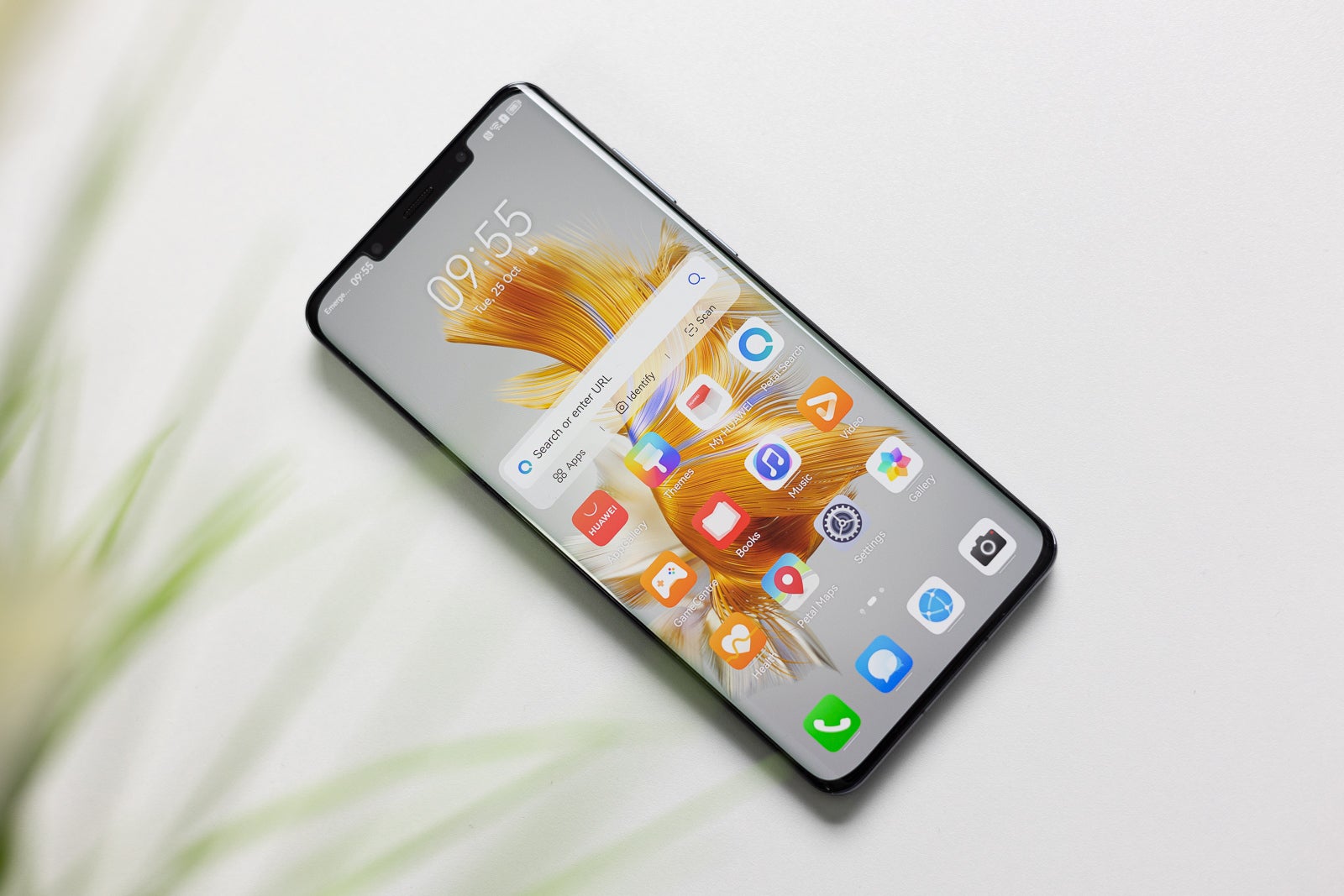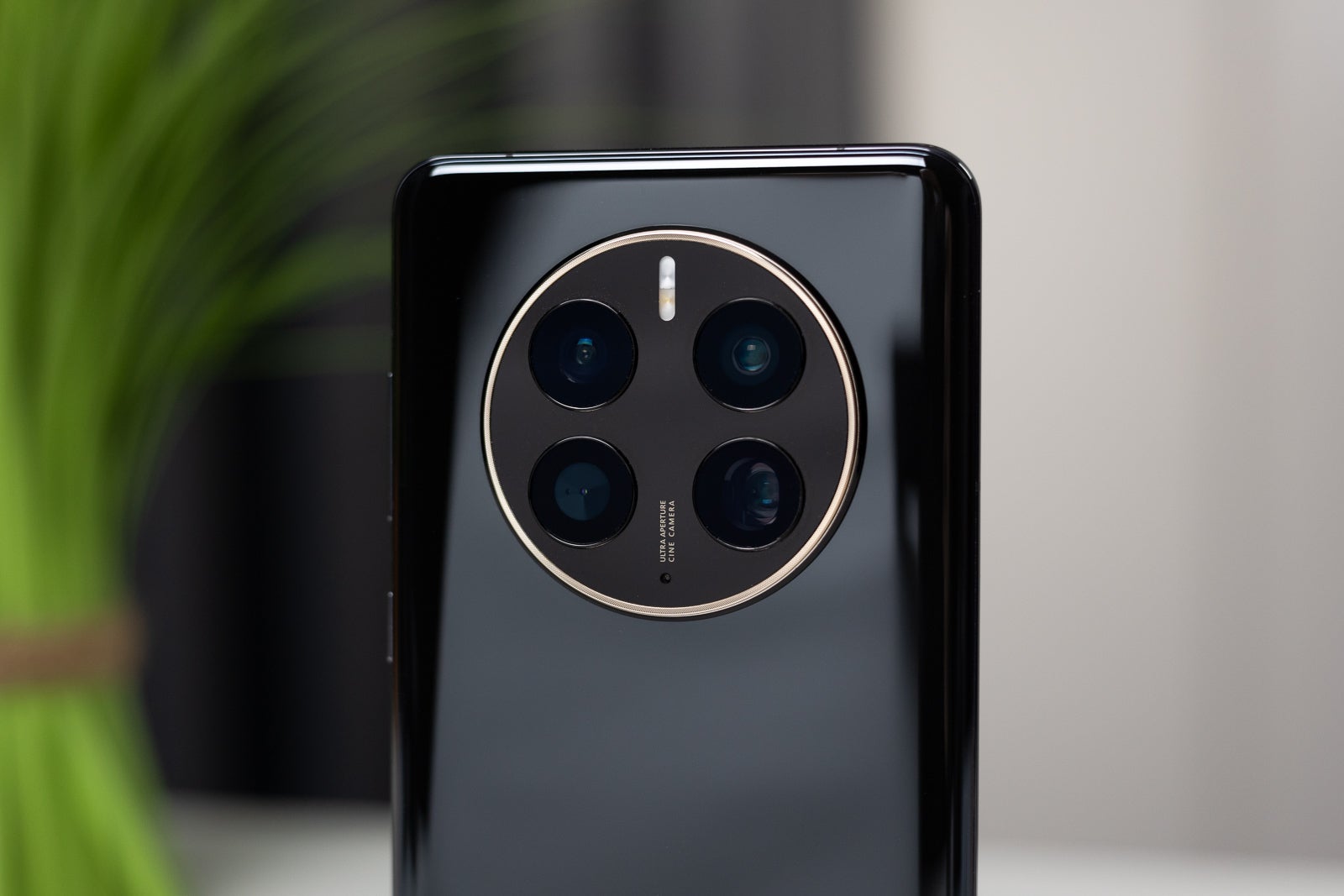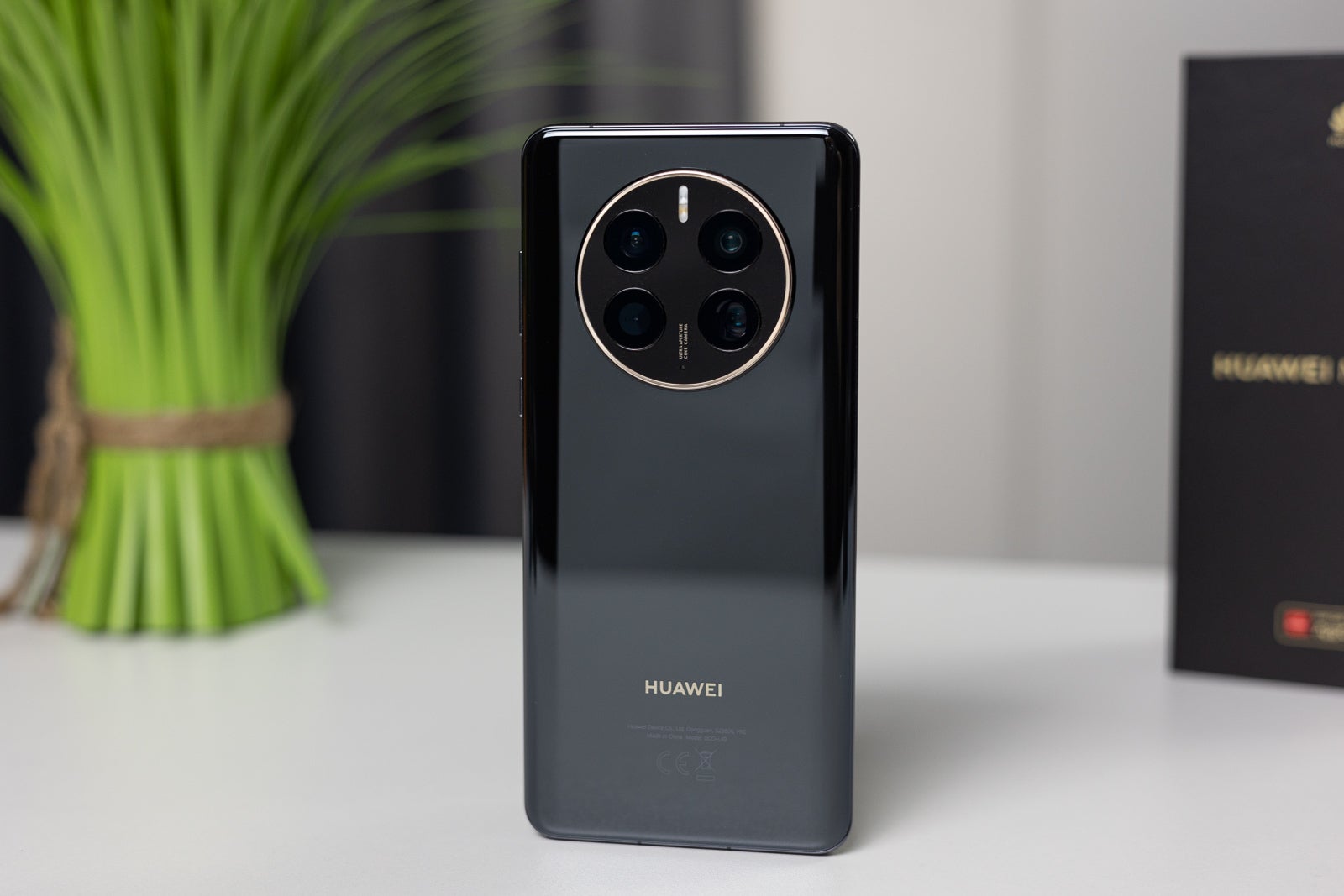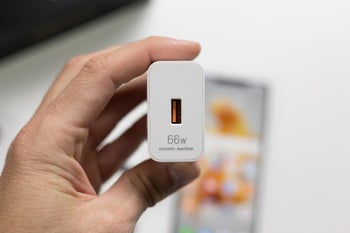Huawei Mate 50 Pro Review: Picture Perfect
Huawei Mate 50 Pro Intro
It’s hard to talk about Huawei without mixing politics into the picture – the Chinese company was once the number one smartphone manufacturer (albeit for a very short time) but since the trade ban things have not been great.
Which is a shame really, because Huawei has always delivered top-notch hardware when it comes to smartphones, and especially when it comes to mobile photography, and the Huawei Mate 50 Pro is no exception.
Even though Google Services are nowhere to be found on this phone, the Mate 50 Pro more than makes up for it with its amazing camera system, great AMOLED display and fast charging magics.
What’s new about the Huawei Mate 50 Pro
- Main camera with variable aperture
- 3D ToF sensor for face recognition
- EMUI13
- Kunlun glass
Table of Contents:
Huawei Mate 50 Pro Unboxing
A charger, cable and a case went into a retail box…
This may sound like the beginning of a joke but the joke nowadays is on us customers. Some companies are now shipping their smartphones absolutely barebone – no accessories whatsoever.We’re happy to report that this isn’t the case with the Huawei Mate 50 Pro, which is to be expected. Most smartphones from the Far East come with plenty of goodies in the retail box. Here we’ve got a hefty 66W fast charging brick, one USB Type-C cable, a decent clear silicone case, and the SIM ejector tool.
That was the bare minimum a couple of years ago, and we used to complain about the lack of decent bundled headphones but it is what it is.
Huawei Mate 50 Pro Specs
Top-notch silicon with one big omission
| Specs | Huawei Mate 50 Pro |
|---|---|
| Size and Weight | 162.1 mm x 75.5 mm x 8.5 mm, 209g |
| Display | 6.74″ OLED, 120Hz, HDR10+ |
| Processor | Snapdragon 8+ Gen 1 (no 5G module) |
| RAM | 8GB |
| Storage | 256GB / 512GB, Nano memory card expandable storage (up to 256GB) |
| Software | EMUI13 |
| Cameras | 50 MP Ultra Aperture Camera (RYYB F1.4~F4.0 aperture, OIS) 13 MP Ultra -Wide Angle Camera (Macro F2.2 aperture) 64 MP Telephoto Camera (F3.5 aperture, OIS) |
| Battery Size | 4,700 mAh |
| Charging Speeds | 66W wired charging, 50W wireless charging |
| Price | Around 1,300 euro |
Looking at the table above it’s plain to see that Huawei has done everything to offer the best possible hardware in this flagship model but there’s one thing that’s missing. 5G. Even though the Mate 50 Pro sports the latest Qualcomm silicon – the Snapdragon 8+ Gen 1, it’s a custom 4G version as Huawei is not allowed access to sweet 5G chips.Here’s a link to the full Huawei Mate 50 Pro specifications
Huawei Mate 50 Pro Design & Colors
Gorgeous but still curvy
Those of you who have had the opportunity to hold and use a Huawei Mate device in their hand will feel absolutely at home with this model. The design has evolved with every generation but it’s still unmistakably Mate-ish.
My old Huawei Mate 20 Pro sports the same gently curved front and back, slim bezels and wide notch. The camera bump is the only thing that has been transformed over the years, and for a good reason. It’s a great metaphor for the evolution of mobile photography (also, quite literally the camera hardware has changed, duh!).
What hasn’t changed is the curved screen and back – Huawei is sticking to those, despite the industry moving back to flat screens lately. There are only two buttons on the right side of the device – the power button (with a nice red accent) and the volume rocker.
The overall design is very clean and feels premium in the hand, even though the sides are a bit thin and digging into your hand. The phone is also quite slippery without a case, which is not the case (pun intended) with the faux leather orange model.
Speaking of colors, there are only three options for the Pro, the already mentioned Orange one, plus Black and Silver variants. To wrap it all up – the design is very pleasant, the only thing that might bug some people is the camera bump with its textured metal ring and quite in-your-face cameras. But design is subjective and you can decide for yourself whether you like it or not.
Huawei Mate 50 Pro Display
Up there with the big boys

The display of the Huawei Mate 50 Pro is just gorgeous but that shouldn’t come as a surprise. The company has been slapping on top-notch panels since the first Mate. This one comes with a 120Hz refresh rate (not an LTPO panel, sadly), and you can choose Dynamic, which will switch between 60, 90, and 120Hz accordingly.
Another cool thing is the 1440 Hz PWM dimming (well it’s not like true DC dimming) which is easier on eyes. PWM (pulse width modulation) is a way to control brightness by making the screen pulsate at a frequency – our eyes perceive it as dimmer. DC (direct current) dimming is the better way to do it, it controls the current to the screen effectively making the diodes emit less light.
The screen can display a 10 bit color palette (1+ billions of colors), and it also supports the P3 colorspace, and HDR10+. It’s pretty accurate too, in Normal mode the deltaE number is impressive, and the color temperature is set perfectly at 6500 Kelvins. As far as brightness goes, this panel can go up to around 900 nits which is plenty bright.
The 6.74-inch AMOLED panel sports a resolution of 2616 x 1212 Pixels, resulting in around 428PPI. You can also switch between full resolution and a battery-saving low-res mode, or let the phone automatically do it for you in Dynamic mode. Always-on, Dark Mode, Eye Comfort are also onboard, and you can also choose the color temperature. All in all – a great AMOLED panel.
Display Measurements:
Biometrics are also present in the form of an under-display fingerprint scanner, and a ToF-based face recognition tech. Both work fine, but the face recognition is our personal favorite – it’s faster and more accurate than the fingerprint scanner.
Huawei Mate 50 Pro Camera
Where the magic happens

Welcome to the main act on today’s show – the camera system of the Huawei Mate 50 Pro. Sony has its variable zoom lens and now Huawei has come up with another technology breakthrough in smartphone photography – variable aperture.
But we’re getting ahead of ourselves here, let’s quickly run through the specs for the number nerds out there. The Mate 50 Pro features a triple camera system on its back, consisting of a 50 MP Ultra Aperture Camera (RYYB F1.4~F4.0 aperture, OIS), 13 MP ultrawide camera (with macro mode and F2.2 aperture), and a 64 MP telephoto camera (F3.5 aperture, OIS) capable of 3.5 optical zoom, and 10x hybrid.
Now that’s out of our way, so we can focus on the samples. And they are really good! Daylight pictures display a lot of detail with great dynamic range, and the colors are pretty accurate too. There isn’t any perceivable shift in tonality between the different sensors – so going ultrawide or telephoto won’t result in yellowish or purple tint.
The telephoto periscope camera is also great and 3.5x shots are really detailed with almost no loss of clarity. This applies to 10x hybrid zoom samples as well – Huawei’s algorithms dealing with noise and detail preservation are top notch.
There are however occasions where the algorithms deliver strange results – take a look at the whole zoom range sample below – from the ultrawide camera, through the main lens, and then up to 3.5x and 10x zoom. The 10x shot is doing strange things with that guy’s head.
The main camera sensor sits underneath a diaphragm similar to what you get in a regular camera and it provides that aforementioned variable aperture. In Aperture mode you can choose from four distinct f-stops, and if you go Pro, there’s a wider range going from f/1.4 all the way to f/4.0 in smaller steps ( f1.4-1.6-1.8-2.0-2.2-2.5-2.8-3.2-3.5-4.0).
Obviously, it makes a huge difference when it comes to achieving that bokeh effect and it’s purely optical, which means no software artifacts or other imperfections. Truth be told, there’s a software aperture setting as well but we can’t see the need for it when you have the physical one, and f/1.4 blurs the background more than enough for artistic effect.
There’s a dedicated macro mode which uses the ultrawide lens to capture closeups and this has been on Mate models since the Mate 20 Pro. You can get pretty decent macro shots with some patience and practice (and sometimes the use of manual focus), and it’s a nice creative tool to have.
Low-light photography has been another strong side of Huawei phones, and the Mate 50 Pro is no exception. The RYYB sensor (swapping the green for yellow) helps a ton and there are some algorithms at play in the background, even with night mode off.
The Mate 50 Pro can shoot videos with up to 4K@60fps resolution and they turn out quite decent. If you opt for 1080p instead you can employ image stabilization which is a mix between the OIS and EIS, and does a really good job.
In 4K you can zoom in and out (all the way from the ultrawide lens to 10x hybrid zoom), while recording but the transition between the different lenses is pretty obvious.
As a wrap up, we can safely say that the Huawei Mate 50 Pro is a very potent camera phone, up there with the big boys. Samples in isolation are not perfect though, so stay tuned for camera comparisons coming your way shortly!
Huawei Mate 50 Pro Performance & Benchmarks
Snappy Snapdragon stumbles under load
The Mate 50 Pro comes with the latest Snapdragon onboard – the 8+ Gen1, and it’s a custom 4G variant of the chipset. We have 8GB of RAM and 256/512GB memory options.
The onboard storage can be expanded via the proprietary NM (nano memory) card slot but these memory cards are pretty rare and the supported capacity is not that great either – just another 256GB.
The slot is there, though, and if you feel pressed for storage, you can go the extra mile and buy one of these NM cards.
Now, when it comes to performance, it’s more or less the usual – with the caveat that the Mate 50 Pro drops the ball under sustained load. Benchmark figures are comparable to other Snapdragon 8+ Gen1 smartphones, and there’s a noticeable slump in performance during stress tests and sustained heavy load.
Performance Benchmarks:
Now, with all that being said, real-life performance is pretty snappy, no delays, stutters or any lag whatsoever. We’ve talked time and again about benchmark figures, and frankly – they are relevant in some cases but often don’t paint the whole picture.
Huawei Mate 50 Pro Connectivity
5G is missing but is it such a big deal?
The lack of 5G on the Huawei Mate 50 Pro needs to be addressed – for some people it can be a deal breaker. There’s a huge debate on whether 5G is actually worth it on smartphones (it’s really a game changer when it comes to smart home, self-driving cars and so on), and we decided to run a quick speed test to see how the Huawei 50 Pro fares with its 4G modem.
The phone managed 220 Mbps sustained download speed and 26ms ping time, and of course, this depends on your location, the network coverage in the area and many other factors. Chances are you won’t feel any difference on 5G, and for what it’s worth the latter can even be slower and not very reliable, especially outside big cities.
We really advise you not to focus too much on the lack of 5G (even though it’s listed as a con), it really doesn’t make a huge difference at this point.
Huawei Mate 50 Pro OS/Android version
EMUI is getting smarter
The huge elephant in the room can’t be ignored – the phone comes without Google Mobile Services and this leads to a chain of software events that most people won’t be pleased with. Granted, you can live without GMS or find workarounds but when you’re paying north of 1,000 euros is this the thing you’re looking for?
That being said, the new EMUI 13 is great and really helpful with tons of features. One of the most useful ones is the ability to stack widgets together and make a custom one on your home screen. These are great and add a whole new dimension of possibilities.
Of course, AppGallery is your go-to app store, and you should live with that or use the web versions of your favorite apps that are missing (and there will be some for sure). Another cool feature is the AI search which is accessible by pulling down from any position on the screen (except top right which is the control center).
You can also use the home screen widget of the said search to quickly scan QR codes, identify objects via the camera AI algorithms, do a voice search and more. Most of the advanced features such as SuperDevice require you to log in your Huawei account in order to provide integration with other gadgets in the ecosystem.
All in all the software experience is quite polished but it requires you to leave Google behind and embrace the alternative. If you try to cling to your old GMS habits it would only bring you sadness and frustration.
Huawei Mate 50 Pro Battery
Long-lasting and fast-charging
The battery inside the Huawei Mate 50 Pro sports a capacity of 4,700mAh. It’s a pretty decent size, given the phone’s slim waistline, and in real-life it will give you one full day of heavy usage easily.Unfortunately, the phone handles display brightness in such a way that it simply can’t run our battery tests adequately, and we can’t post any hard numbers here. What we can say is that during our testing the phone managed consistently screen-on times of 8+ hours.
Huawei Mate 50 Pro Charging Speeds
Far East phones have always been on the forefront of fast charging, and even though the Mate 50 Pro doesn’t come with record-setting fast-charging technology (100-200W), the phone is able to charge up pretty fast.
Wireless charging is also present with up to 50W of power but we weren’t able to test that with an adequate wireless charger. The phone also supports Reverse wireless charging with 5W of power so you can charge up other QI-rated accessories.
Huawei Mate 50 Pro Competitors
There’s no doubt that the Huawei Mate 50 Pro is a potent flagship phone but this doesn’t mean it would crush the competition. Sadly, the lack of Google Mobile Services condemns this phone to a niche status.
Even in homeland China the competition will be fierce – the Xiaomi 12S Ultra with its 1-inch IMX989 sensor is the archrival. But let’s talk globally for a moment – the Mate 50 Pro launched in Europe and the competition on the Continent is absolutely excruciating.
The asking price of around 1,300 euro puts the Mate 50 Pro in the ultra-premium category, and people are much more likely to buy the iPhone 14 Pro Max or the Galaxy S22 Ultra (or S23 when it comes out) instead.
The Mate 50 Pro would probably make some niche users willing to go off the Google-grid happy but most people won’t take the huge leap of faith (and money) to go and get this great camera phone. Speaking of which, photography enthusiasts might be willing to give it a try, and the Mate 50 Pro will then be forced to tackle the equally niche (and equally expensive) Xperia phones.
Huawei Mate 50 Pro Summary and final verdict

Well, there you have it! Huawei has done it again, against all odds. The Huawei Mate 50 Pro is a great flagship device with an amazing camera system, top notch AMOLED display, and the fastest processor available at the moment. Not to mention the battery life and fast charging (plus the goodies included in the retail box).
There aren’t many cons to be pointed out, except maybe the steep price but nowadays expensive smartphones are all the rage. Yes, the lack of Google Services is a thing, and it’s listed in the cons section alongside the 4G connectivity.
Parting ways with everything Google and stepping into a whole new ecosystem is a tough decision. We’re pretty sure the Huawei Mate 50 Pro will get the praise it deserves in reviews and comparisons but sadly this won’t translate to sales figures. But it is what it is, and if this phone pushes the competition to new heights, it would’ve served its purpose.
For all the latest Technology News Click Here
For the latest news and updates, follow us on Google News.


